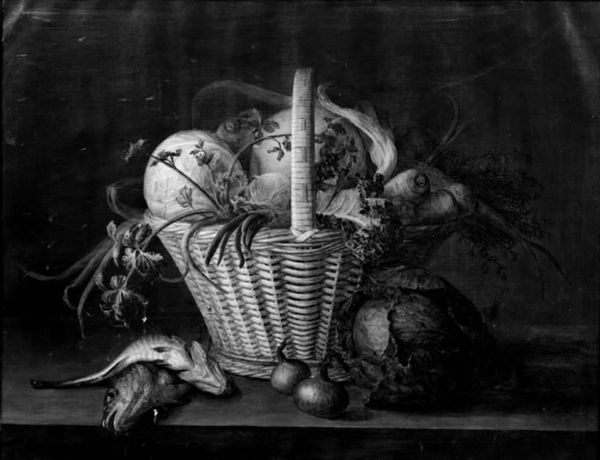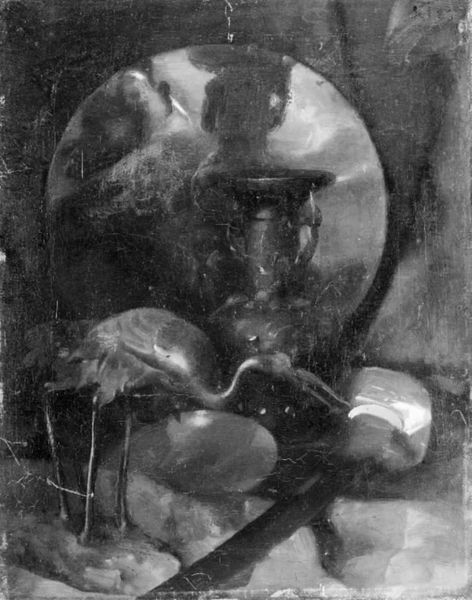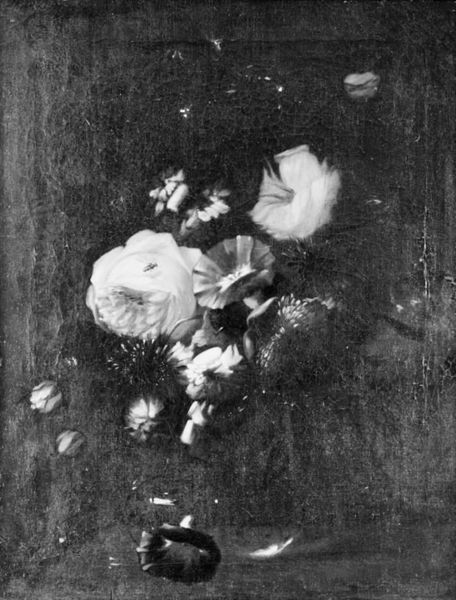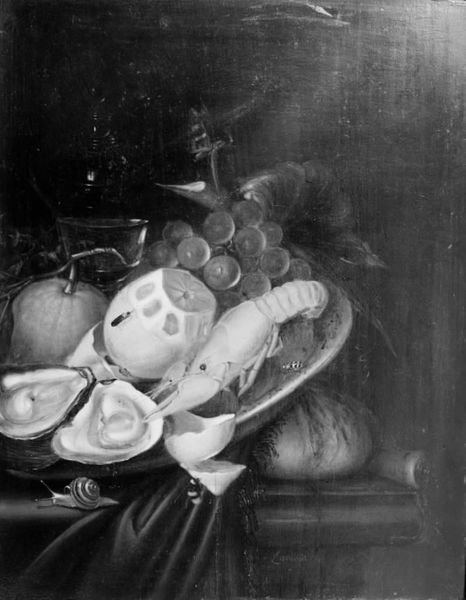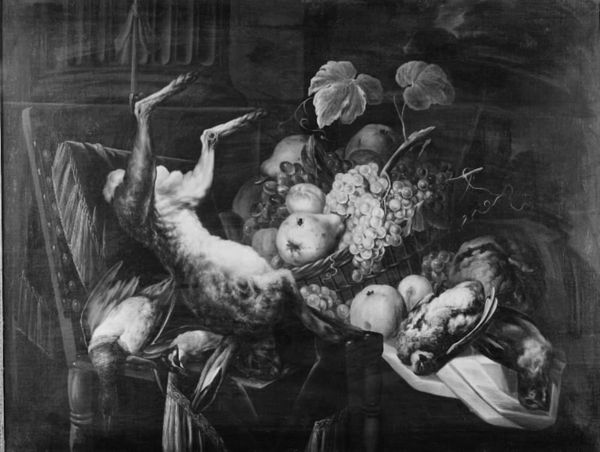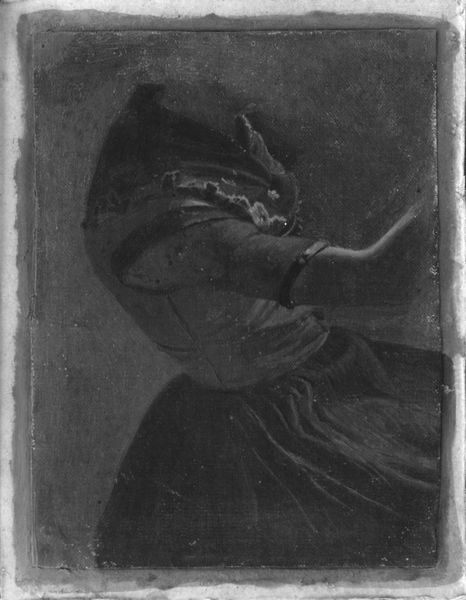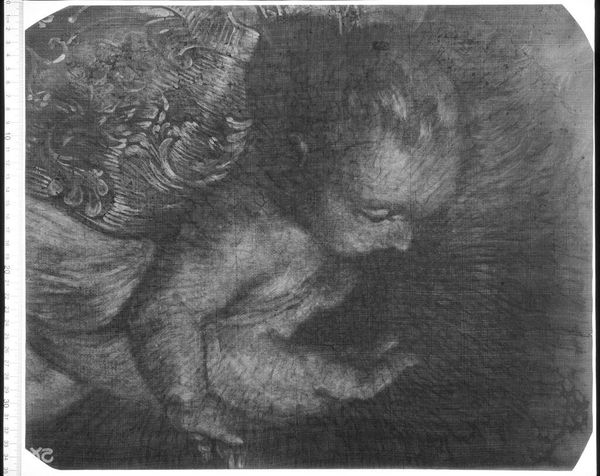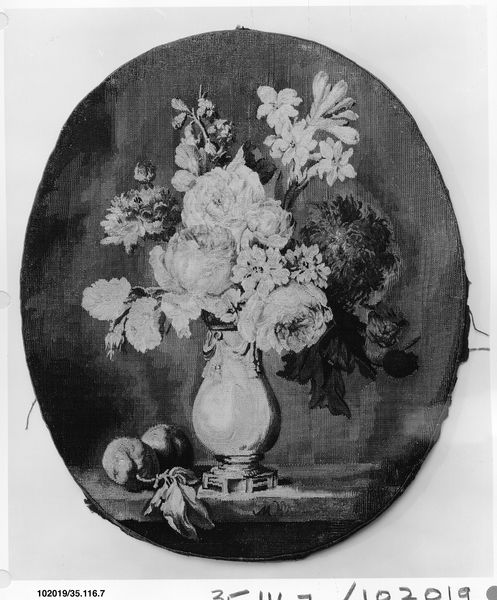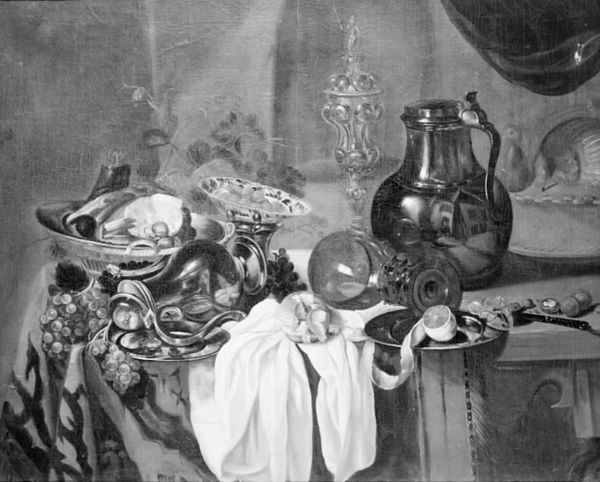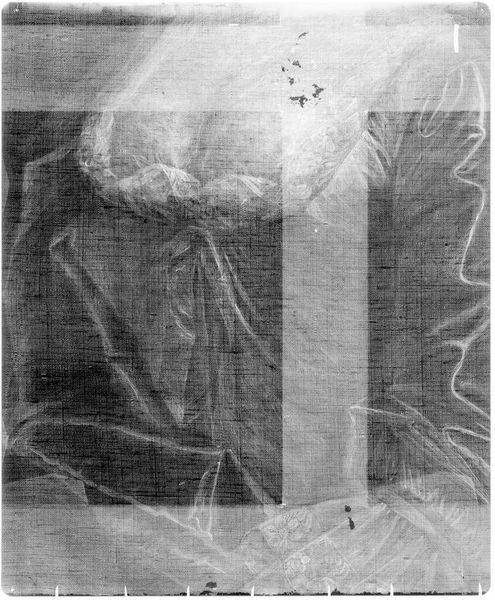
painting, oil-paint
#
baroque
#
black and white photography
#
painting
#
oil-paint
#
black and white format
#
black and white
#
monochrome photography
#
monochrome
#
monochrome
Dimensions: 41.2 cm (height) x 32.5 cm (width) (Netto)
Editor: So, this oil painting is called "Still Life" by Lambert van Haven, made sometime between 1645 and 1690. It’s a very striking composition, everything's rendered in monochrome. What jumps out at you about this work? Curator: Considering the historical moment, what’s crucial here is understanding the symbolism of still life as it emerged in the 17th century. Beyond its aesthetic appeal, the vanitas tradition reflects anxieties surrounding wealth, mortality, and societal power structures. Look closely – do you notice certain objects recurring in these types of paintings, and what could they represent during this era? Editor: Well, I see fruit, some kind of glassware, and what looks like a butterfly. Are those specific to vanitas paintings? Curator: Exactly. The fruits could be seen as symbols of earthly pleasures and the transience of beauty and life itself. And consider the role of the butterfly, often linked to the soul's journey. This reminds us to contemplate not just the surface of luxury and abundance but the inherent fragility of those systems during that era. The Dutch Golden Age was not golden for everyone, after all. Editor: So, it's about more than just painting pretty things, it's a subtle social commentary. Curator: Precisely! It provokes essential questions about societal values, highlighting potential tension and moral contemplation amidst seeming prosperity. What does this limited colour palette suggest to you, when it's a representation of something usually filled with colour? Editor: That it is almost drained of life or potential? Perhaps this is how they convey death and fragility. Curator: That's a really perceptive comment! The artist urges us to think critically about the historical backdrop. It encourages a powerful dialogue across the centuries. I’m curious to think about it in a modern light. Editor: I never considered looking at still life as having an historical or social context, I was too focused on the visual, it feels much more deep now! Curator: Indeed! Art becomes a mirror reflecting societal structures and invites an important dialogue with our contemporary experience.
Comments
No comments
Be the first to comment and join the conversation on the ultimate creative platform.
